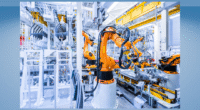The manufacturing industry is evolving rapidly, driven by technological advancements, changing customer demands, and global competition. To stay ahead, manufacturers must adopt strategies that enhance efficiency, improve quality, and foster innovation. One proven approach is embracing Kaizen principles, the Japanese philosophy of continuous improvement. By integrating Kaizen into modern manufacturing practices, organizations can position themselves for long-term success.
Understanding Kaizen in Modern Manufacturing
Kaizen, meaning “change for the better,” focuses on small, incremental improvements rather than large-scale disruptions. It emphasizes continuous enhancement across all operational areas, involving employees at every level to identify inefficiencies and implement practical solutions. In the context of modern manufacturing, Kaizen helps organizations remain agile, reduce waste, and respond effectively to market changes.
Core Principles of Kaizen:
-
Continuous Improvement: Incremental changes accumulate into significant operational gains.
-
Employee Involvement: Engaging staff at all levels encourages innovation and accountability.
-
Waste Elimination: Streamlining processes reduces non-value-added activities, including overproduction, waiting time, and unnecessary motion.
-
Standardization: Documenting successful improvements ensures consistent results and sustainability.
How Kaizen Shapes the Future of Manufacturing
1. Increased Operational Efficiency
Kaizen enables manufacturers to streamline workflows, reduce bottlenecks, and optimize resource allocation. By continually improving processes, organizations can increase productivity without additional capital investment.
2. Cost Reduction
Waste elimination and process optimization are at the heart of Kaizen. By minimizing material waste, reducing machine downtime, and optimizing labor, manufacturers can lower operational costs while maintaining high-quality output.
3. Enhanced Product Quality
Continuous improvement ensures quality is embedded in every stage of production. Kaizen helps identify defects early, reduce rework, and maintain consistency, leading to higher customer satisfaction and stronger brand loyalty.
4. Employee Engagement and Innovation
Kaizen fosters a culture where employees are actively involved in problem-solving and process improvement. Engaged employees are more motivated, creative, and committed to achieving organizational goals, driving innovation and efficiency.
5. Agility and Adaptability
The manufacturing landscape is constantly changing. By embracing Kaizen, companies develop a culture of adaptability, enabling them to respond quickly to new technologies, market demands, and competitive pressures.
Implementing Kaizen for a Future-Ready Manufacturing Process
To embrace Kaizen effectively, manufacturers should assess current processes, involve cross-functional teams, set measurable goals, and adopt tools such as 5S, PDCA cycles, and value stream mapping. Strong leadership support and ongoing monitoring are essential for sustaining improvements and embedding a culture of continuous improvement.
By adopting Kaizen principles, manufacturers can enhance efficiency, improve quality, foster employee engagement, and remain competitive in an ever-evolving industry. The philosophy provides a roadmap for building a future-ready manufacturing organization capable of continuous growth and innovation.









